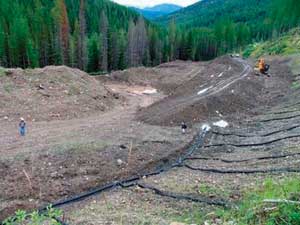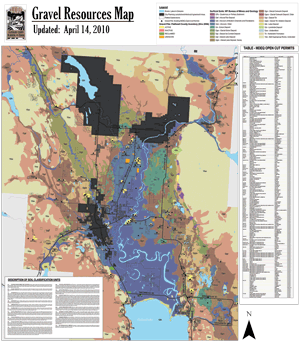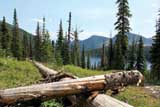Mining
“More gold has been mined from the thoughts of men than has been taken from the earth.”
- Napoleon Hill, Author 1883 - 1970
As citizens, we all contribute to the demand for metals and fossil fuels. We have also learned many lessons over decades of extractive practices that help us manage our mining activities today. Mining has had a long and contentious history in the Flathead Watershed. Early explorers searched and mined the land for precious metals, but were most often disappointed with their claims. Remnants of early oil exploration can be seen near Kintla Lake in Glacier National Park and Waterton Lakes in Waterton Lakes National Park. Federal legislation has been introduced to prohibit any new gas and oil leases, with a goal of introducing further legislation to retire existing leases. In a gesture of good will, some companies have voluntarily retired their existing leases without any cost to taxpayers. Important human and wildlife habitat have been protected as a result.
 |
| Figure 5.13: Coal bed mining. Source: Erin Sexton |
Coal mining has been a very controversial issue particularly in the transboundary region which straddles the Elk Watershed in Canada and the Flathead Watershed in the U.S. The area—which spans the Glacier International Peace Park—is considered so internationally important on both ecological and social levels that it was deemed a World Heritage Site and a Biosphere Reserve by the United Nations Educational Scientific and Cultural Organization (UNESCO). Citizens, organizations, and government officials have fought since the 1980s to protect the region from proposed mining operations and their potentially devastating effects on land, water, and wildlife.
In early 2010, after many years of multi-stakeholder pressures and difficult discussions, British Columbia Lt. Governor Steven Point declared the Canadian portion of the Flathead River Valley off limits to mining and energy extraction. The critically important Memorandum of Understanding and Cooperation on Environmental Protection, Climate Action and Energy between the Province of British Columbia and the State of Montana, and witnessed by the Confederated Salish and Kootenai Tribes and the Ktunaxa Nation, was signed by Premier Campbell of B.C. and Governor Schweitzer of Montana on February 18th, 2010.
 |
| (click to enlarge) Figure 5.14: Gravel resources map. Source: Flathead County Planning & Zoning |
The Memorandum of Understanding (MOU) permanently prohibits coal mining, hardrock mining, coalbed methane, and oil and gas development thereby protecting the Flathead River, and Flathead Lake and the Clark Fork and Pend Oreille Rivers into which the Flathead River empties. The MOU prevents substantial ecosystem disruption and pollution to the Flathead Watershed, one of the most biologically important regions on the continent and in the world. It helps to protect the exceptional water quality and habitat for threatened bull trout and grizzly bears and the amazing complement of wildlife that make the headwaters region their home.
Growth in the Flathead Watershed also drives the need for gravel mining for construction, road building and maintainance. Dust, traffic, and groundwater pollution are issues that are considered in the planning and location of gravel extraction. In 2010, Flathead County pooled information from several sources—including a state Department of Environmental Quality map of open-cut mining permits and the state Bureau of Mines and Geology’s map of the Flathead’s surficial geology: the area under the soil and above the bedrock—to create a Gravel Resources Map. A major goal of the mapping project is to give the county and property owners a better understanding of where and why gravel pits exist.

